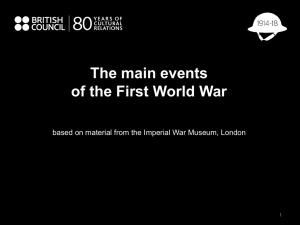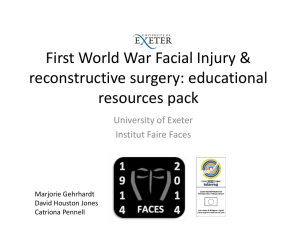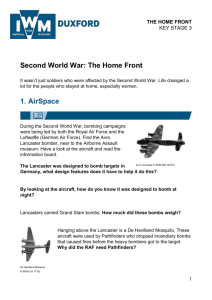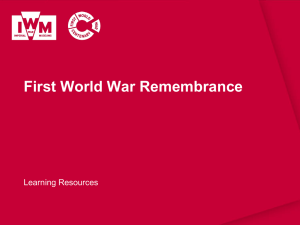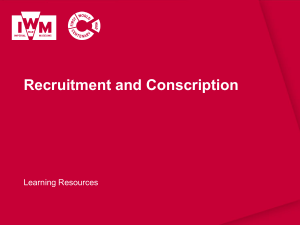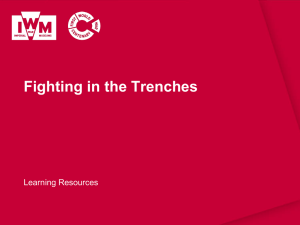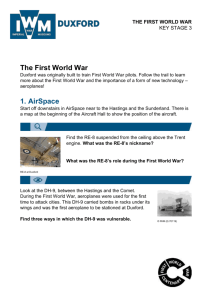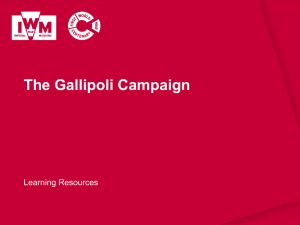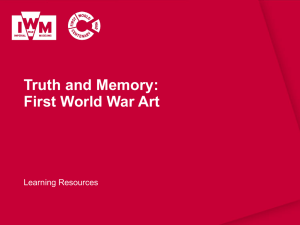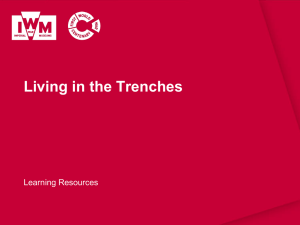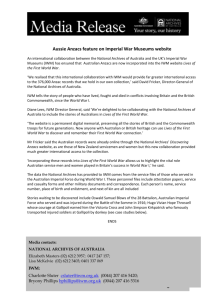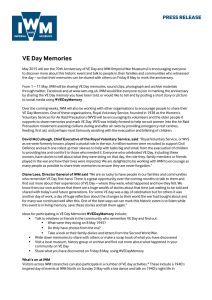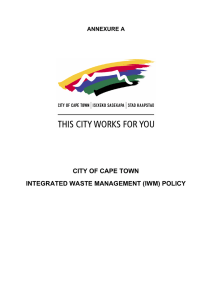The 1940s House
advertisement
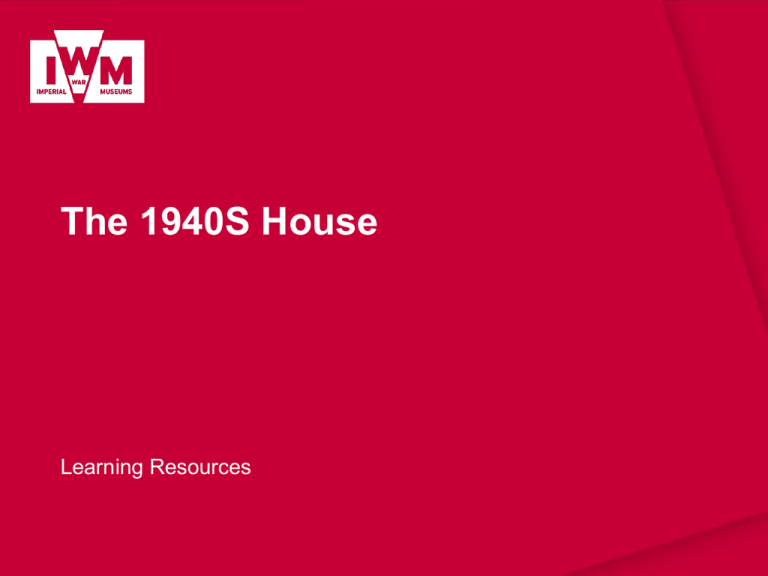
The 1940S House Learning Resources IWM Learning Resources: Terms of Use • The images in this resource can be freely used for non-commercial use in your classroom subject to the terms of the IWM’s Non Commercial Licence: http://www.iwm.org.uk/corporate/privacy-copyright/licence • You can use the full presentation or use individual slides within other presentations for use within school and to share with other teachers for their non commercial use as well. • You can print the images out up to A4 size if you wish to use hard copies with your class. • Each image comes with an attribution statement, which must be included wherever the image is used. For example, © IWM (Art.IWM ART 1179). • Every effort has been made to contact all copyright holders. IWM will be glad to make good any error or omissions brought to their attention. • By downloading this PowerPoint and using these images you agree to these terms of use, including your use of the attribution statement specified for each object by IWM. © IWM The Living Room In the Living room we see how families spent their spare time listening to the wireless and gramophone records. The family also used this room to sew and knit, having to ‘Make do and Mend’, after clothes rationing was introduced in June 1941. © IWM The Kitchen The difference between a modern and wartime kitchen are highlighted here, in particular storing food without a fridge and washing clothes without a washing machine. Food and fuel rationing also affected activity in the kitchen. Bacon, ham, butter and sugar were the first foods to be rationed in January 1940, with meat going ‘on the ration’ from March 1940. © IWM (D 24987) Food Rationing In this photograph from 1945 two women discuss food rationing. Behind them we can see a fruit and vegetable stall. Fruit and vegetables were never rationed, but they could be in short supply as very little could be imported from abroad and so Britain was reliant on home-grown seasonal crops. Some food rationing continued in Britain until June1954. © IWM (EPH 4611) Squander Bug air rifle target The Squanderbug first appeared in press adverts, but quickly developed a life of its own after use in several poster designs, urging people to save for the war effort rather than helping Hitler by ‘squandering their money on consumer goods. Members of the public made their own effigies from materials like papier mache, using them for target practice and in town parades culminating in the symbolic hanging of the creature. © IWM (Art.IWM LD 3987) The Queue at the Fish-shop by Evelyn Dunbar Although fresh fish was never rationed, it was often in short supply, and quite expensive. Fish queues were always long and even air raids could not disperse them. Supplies were limited as the Royal Navy requisitioned much of the fishing fleet and the German Navy and Air Force restricted the activity of the remaining fleets in the North Sea. © IWM The Dining Room In this room we can also see how the family prepared for air raids, with Splinternet tape on the windows and an Anderson Shelter in the garden. © IWM (D 2031) Morrison Shelters This Ministry of Information drawing shows the multi purpose Morrison Shelter. It was available from 1941 onwards, and provided a solution for families without a garden, who could not build an Anderson Shelter. ARP Wardens kept a list of houses that had an Morrison Shelter, so rescuers knew they should dig to free the family beneath the rubble. © IWM The Boys’ Bedroom In the Boys’ bedroom we discover the toys that the boys played with. Toys became more difficult to obtain as the war continued and companies such as Meccano produced weapons instead. © IWM (D 13102) Clothes In this photograph from 1942 a four year old girl is modelling utility underwear. Her pale blue wool sleeping suit cost 18s 9d and four coupons. Clothes rationing was introduced in June 1941. In the same year utility clothing was introduced to save on labour and materials. Clothing meeting Board of Trade standards were labelled with the CC41 insignia, denoting Civilian Clothing 41. She is surrounded by toys including a doll in a cot and soft toys. By 1942 toys were very difficult to buy new and many were handmade. © IWM (EPH 6354) Toys Toys were in short supply during the Second World War and many were hand-made. This pull-along toy dog was made by German prisoners of war for the Duke family children. This was the inspiration for Michael Morpurgo’s “Little Manfred”. © IWM (Art.IWM LD 264) The Evacuation of Southend The evacuation of children from towns and cities began on 1st September 1939, but due to the inaction of the Phoney War many returned home quite quickly. In June 1940 the government expected the Nazis to invade Britain. This led to the evacuation of coastal towns such as Southend. Children in other towns and cities were evacuated once again when the Blitz began in September 1940. In this audio clip Derek Milton explains that his Mother decided not to evacuate him, despite living in Kennington, London. © IWM The Master Bedroom In the Master Bedroom we see a bedroom which unusually has twin beds instead of a double. In 1942 the Utility Furniture Scheme (UFS) was introduced and here we see a utility bedroom suite. The emphasis was on good quality and economical use of materials. There were 22 items of essential furniture made in three designs and two qualities. © IWM (D 12855) Utility furniture The photograph shows Marcelle Lestrange looking at her Utility furniture permit in March 1943. These permits were introduced in 1942 for newly-wed couples setting up home and for people who had been bombed out. Permits were valid for three months and the furniture was valued in money as well as in units. Second -hand furniture did not require a permit and goods were also donated for distribution to those in need by the Women’s Voluntary Services (WVS). © IWM The Bathroom The 1940’s house had both an indoor toilet and bathroom which were still quite unusual at that time. Many families relied on a tin bath in the kitchen for their weekly bath and the toilet was located in the back yard. Bathroom products such as soap and shampoo were rationed from 1942. Every family was advised to have a First Aid kit in the bathroom to treat minor injuries caused by the bombing. © IWM (D 11080) How water rationing In order to save coal, essential for the war effort, a line of five inches was drawn in the bath. This showed the amount of water that you were asked to use. The British Government asked people to ration their use of hot water in order to conserve fuel. Even the baths in Buckingham Palace had lines drawn in them. The 1940S House Learning Resources
